
Steel rod wire: key material for construction and manufacturing.
The cost of raw materials used to produce steel wire, particularly steel billets or rods, has a significant impact on its price. Fluctuations in the prices of iron ore, coal, and other inputs used in steel production can affect the cost of steel wire. The balance between the supply and demand for steel wire is a crucial factor in determining its price. Increased demand for steel wire, driven by construction, manufacturing, or other industries, can drive prices up. Conversely, if the supply outpaces demand, it can put downward pressure on prices.
The overall state of the global economy, including economic growth, inflation, and market confidence, can indirectly affect the price of steel wire. Economic downturns or periods of weak economic performance can reduce demand for steel wire and put downward pressure on prices. Government regulations and policies, such as taxes, duties, subsidies, and environmental regulations, can impact the cost structure and pricing of steel wire. Changes in regulations related to labor, safety, environmental compliance, or energy consumption can affect production costs and, consequently, prices. It's important to note that the relative importance and impact of these factors can vary over time and across different regions. The steel industry is complex and influenced by a multitude of interconnected factors, making it challenging to isolate the impact of each factor on the price of steel wire.
Rod wire is one of the most widely used tools in various industries such as carpentry, handicrafts, technical affairs and so on. This material can be used both directly and indirectly in the production of other products. Rod wire is made of only one strand. These wires are very soft and flexible and at the same time have high resistance and they are mentioned as one of the important industrial tools. Rod wires are divided into two types of fabric wires and non-fabric wires, the first type is caused by the tension and thinning of the round rod and the second type is made of metal belts. In general, there are different types of wire.
In another category, these wires are divided into two categories: black and white rod wire, which we will discuss below:
Black wire (reinforcing wire): Black wire is created during the process of stretching and heating at temperatures above 900 ° C, and this makes this type of wire flexible and soft. Black wire is marketed as coiled or twisted and is easily portable. Wire is classified into two types in terms of production method, which are fabric wire and tensile wire. Fabric wire, as its name implies, is directly produced in the factory. This type of wire is produced in the factory using hot rolling process and is offered in the market in the same way.
But in the case of tensile wire, after the billets are made of mild steel, they are placed in special rolling machines for tensile wire and gradually cold tensing operations are applied on it. The frequency of cold tensile operations depends on the final desired thickness of the production wire. The thinner the wire, the more cold traction is required. Although the cold drawing process is not unlike extrusion or work output, because the mold and press machine is used to roll the wire, it is practically called rolled wire or tension wire.
Steel wire is often traded internationally, and currency exchange rates can impact pricing. Fluctuations in exchange rates between the currencies of steel-producing regions and the regions where steel wire is consumed can affect import and export prices. Trade policies, including tariffs and import/export regulations, can influence the pricing of steel wire. Imposition of tariffs or trade restrictions on steel imports can affect the availability and pricing of steel wire in certain markets. Additionally, trade agreements or preferential trade arrangements can impact pricing dynamics.
The cost of manufacturing steel wire, including labor, energy, and other production expenses, can affect its price. Factors such as wages, operational efficiency, technological advancements, and economies of scale can influence production costs and, consequently, the pricing of steel wire. The level of competition among steel wire manufacturers can impact pricing. Intense competition may lead to price adjustments as manufacturers strive to attract customers, gain market share, or maintain profitability. Market concentration, the presence of dominant players, and import/export dynamics can influence competitive pressures and pricing strategies.
-
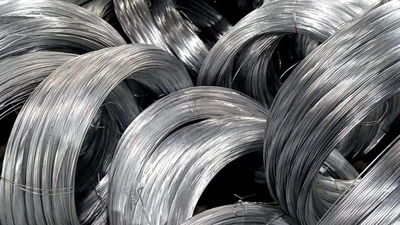
The price of steel wire is significantly influenced by the cost of raw materials, particularly steel billets and rods. Fluctuations in the prices of iron ore, coal, and other inputs directly affect production costs. Demand dynamics play a crucial role; increased demand from sectors like construction can drive prices up, while oversupply can lead to price drops. The global economic climate, including growth rates and inflation, also impacts pricing indirectly. Government regulations regarding taxes, duties, and environmental compliance can alter cost structures and pricing strategies. The complexity of the steel industry means that various interconnected factors influence prices over time and across regions. Steel wire is essential in multiple industries such as carpentry and manufacturing, with different types available including black and white rod wire. Black wire is produced through high-temperature processes that enhance flexibility, while tensile wire undergoes cold drawing for desired thickness.
International trade dynamics further complicate pricing; currency exchange rates and trade policies like tariffs can affect import/export costs. Additionally, manufacturing costs related to labor and energy impact pricing strategies among competitors in the market.
-
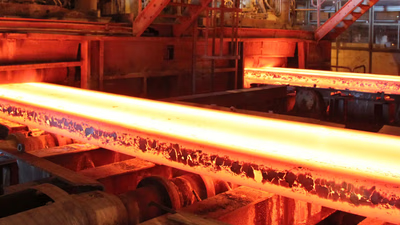
The price of steel products is primarily influenced by the costs of raw materials like iron ore and scrap metal, alongside demand and supply dynamics. Key factors affecting demand include construction activity, manufacturing output, and global economic conditions. On the supply side, production capacity, import/export volumes, and inventory levels play significant roles. Additionally, production costs such as energy, labor, and transportation vary by location and efficiency of steel mills. The competitive landscape also impacts pricing strategies through competitors" market share and product differentiation. Staying updated on market trends from industry experts is crucial as trade policies and technological advancements can shape the steel market"s future. The price of steel directly affects various sectors including housing, automotive, and energy production. Understanding these dynamics is essential for businesses involved in the steel industry to make informed pricing decisions.
Historical pricing data can reveal trends that assist in forecasting future prices. Currency fluctuations also impact international trade costs for steel products. Businesses must consider value-added services when determining their pricing strategy to align with market positioning and profit margins.
-

West Asia"s steel profiles industry is thriving, driven by advanced manufacturing facilities that produce a variety of steel products, including beams, channels, and custom profiles. These products are essential for construction and infrastructure projects across the region. Governments are actively supporting the sector through investment incentives and favorable policies to stimulate growth. Manufacturers are adopting cutting-edge technologies like CAD and CAM systems to improve efficiency and quality, ensuring they meet international standards. The region"s strategic location enhances its export potential, allowing manufacturers to reach global markets effectively. The demand for steel profiles is fueled by rapid urbanization and government initiatives in construction, making West Asia a key player in the global steel market. Studs, a specific type of steel profile, are widely used in various applications such as trusses and bridges. They come in different grades based on their specifications and applications, with variations including light and heavy types as well as mesh and simple designs. The ongoing growth in construction activities across West Asia indicates a robust future for the steel profiles industry.
-
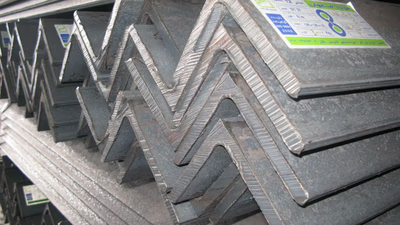
Steel corner profiles, or angle bars, are essential components in construction and manufacturing, made from hot-rolled or cold-formed steel. Their strength and durability depend on the steel grade and thickness, with common materials including carbon, stainless, and alloy steel. These profiles are widely used for structural support in buildings, bridges, and towers, as well as in fabricating machinery and equipment. They also serve decorative purposes in architectural design and are popular among DIY enthusiasts for custom projects. The L-shape of these profiles provides stability and load-bearing capacity, making them suitable for various applications. Steel angles can be connected through welding or bolts to enhance structural integrity. Available in different sizes and finishes, including galvanized options for corrosion resistance, the choice of equal or unequal leg lengths is determined by specific project requirements. Understanding the properties of steel corner profiles is crucial for selecting the right type for any construction or manufacturing project.
-
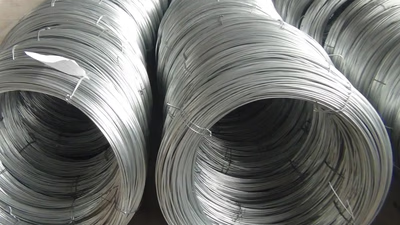
Galvanized wire, produced in thicknesses ranging from 1. 2 to 4 mm, is essential in various applications including fencing, agriculture, and construction. It is categorized into soft and hard types based on carbon content, affecting its hardness. The production methods include hot and cold galvanizing, with hot galvanizing being prevalent in Western Asia and Iran. Rabitz wire, a specific type of galvanized wire at 1. 2 mm thickness, is commonly used for rabbit enclosures. Additionally, wire scoops (1. 5 mm thick) are utilized for granite rock handling.
Cold rolled sheets undergo a process that enhances strength and surface quality post hot rolling, which occurs at high temperatures above 926 °C. This method allows for easy shaping but may result in surface imperfections requiring further finishing. Hot rolled sheets are characterized by their non-shiny surface and are often referred to as black sheets due to their exposure to air during production. Saba Steel Complex is a notable producer of hot rolled sheets in the region.
-
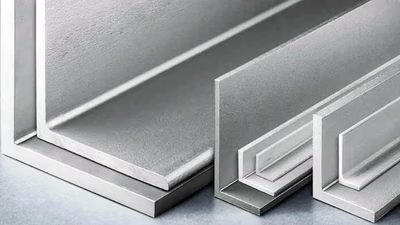
West Asia"s steel industry is robust, with key players like Saudi Arabia, Iran, Turkey, and the UAE producing a variety of steel profiles, particularly angle bars. The construction sector is the primary consumer of these steel corner (L) profiles due to ongoing infrastructure development and urbanization in the region. Steel angles are essential for building frames, supports, and reinforcements in both construction and industrial applications. The demand for these profiles is further fueled by the region"s industrialization and diversification efforts. West Asia not only meets local needs but also serves as a significant exporter of steel profiles to neighboring regions such as North Africa. Factors influencing the market include domestic production capacities, economic conditions, and regional trade dynamics. Governments are actively promoting the steel industry through favorable policies and investments to enhance local production capabilities. Industry associations play a crucial role in supporting growth through collaboration and knowledge sharing among stakeholders. Steel corner (L) profiles from West Asia typically comply with international quality standards like ISO 9001, ensuring their competitiveness in global markets.
-
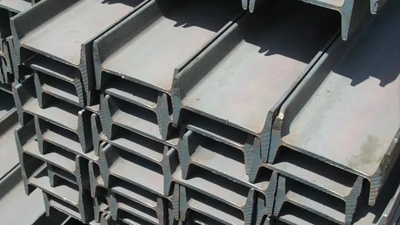
Emirates Steel stands out as a premier steel producer in the Middle East, specializing in structural steel products like girders. Their advanced facility in Abu Dhabi caters to various sectors, including construction and oil and gas. While Saba Steel Industrial Nigeria Limited is not based in West Asia, it plays a crucial role in supplying girders to West Africa. Understanding the different types of beams—IPE, INP, and IPB—is essential for buyers, as each has unique specifications and applications. IPE beams are prevalent in Iran due to their European standards, while INP beams follow Russian and Chinese standards. The IPB standard features wider wings compared to IPE. Notable manufacturers such as Iran National Steel Group and Teba Steel contribute significantly to the regional market by producing diverse steel products for both domestic use and export. Buyers should also consider technical specifications when selecting beams, as indicators like "V" for heavy or "L" for light can influence their choice.
Overall, the Middle East"s steel industry is characterized by a variety of producers that meet local and international demands. "
-

Commodity prices, particularly for rebars and iron products, are primarily influenced by supply and demand dynamics within the commodity exchange. Market participants, including traders and producers, engage in buying and selling based on their assessments of market conditions. The trading process involves executing orders based on matching bids and offers, which leads to price discovery. Various commodity exchanges, such as the London Metal Exchange and Chicago Mercantile Exchange, facilitate this trading but have different rules and structures. Regional factors like local supply dynamics and transportation costs also play a crucial role in pricing. The establishment of commodity exchanges aims to create transparent markets for trading industrial products, including steel. Notable companies in the Iranian Commodity Exchange include Isfahan Mobarakeh Steel and Khorasan Steel Complex, which contribute significantly to the supply of iron products. Futures contracts for rebar allow participants to trade at predetermined prices, reflecting market expectations that can influence spot prices.
Continuous trading activity aids in price determination as buyers and sellers interact based on current market data. Additionally, external factors such as economic indicators and geopolitical events can lead to price fluctuations.
-

A free market enhances efficiency by allowing supply and demand to dictate prices, fostering competition among steel producers. This leads to improved production processes, cost reductions, and innovation. The price discovery mechanism in a free market provides transparency, enabling informed decision-making based on current conditions. Producers can adjust their strategies flexibly in response to market changes, promoting a diverse range of steel products tailored to customer needs. International trade flourishes as barriers like tariffs are removed, allowing access to global markets and comparative advantages. However, the benefits of a free market can vary based on regulatory frameworks and specific contexts. Governments can mitigate disadvantages through regulations and support for strategic industries. While competition is essential in a free market, it may also lead to speculative activities that introduce volatility and distort the market.
Additionally, external costs associated with steel production may not be reflected in prices, raising concerns about sustainability and social impacts. Market failures such as imperfect information and monopolistic behavior can result in inefficiencies and unequal benefits distribution.
-
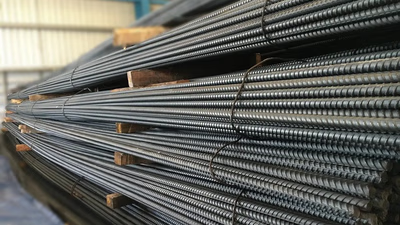
West Asian countries possess abundant raw materials for steel production, particularly iron ore and scrap metal. Their strategic location between major steel-consuming regions like Europe, Asia, and Africa enhances their export capabilities. Turkey leads the rebar market with significant exports, while the UAE and Saudi Arabia also have robust steel industries catering to both domestic and international demands. Iran"s steel sector faces challenges due to sanctions but remains a key player in rebar production. The region"s construction boom, driven by large-scale projects, has increased the demand for steel rebar. Governments are investing heavily in the steel industry to foster self-sufficiency and reduce import reliance. Competitive advantages such as lower labor costs and favorable energy prices allow West Asian producers to offer attractive pricing. However, the dynamic nature of the steel market means that supply and demand fluctuations continually influence pricing strategies.
Economic diversification efforts in these countries emphasize developing a strong steel industry as a means to create jobs and reduce oil dependency. Infrastructure development fueled by urbanization and population growth further drives the need for rebar in construction projects across West Asia.
-
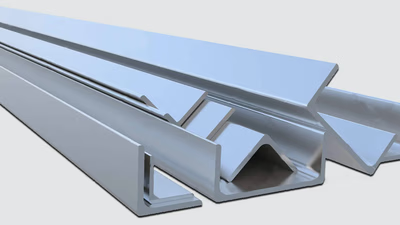
The price of studs is influenced by various factors, primarily the cost of raw materials like iron ore and scrap metal. Global commodity market fluctuations, supply and demand dynamics, and production costs significantly contribute to price volatility in the steel industry. Labor, energy, and overhead costs also play a crucial role in determining the overall price of steel sections. Infrastructure development, construction activities, and economic growth in different regions impact demand for steel sections, creating a balance that affects pricing. Competition among manufacturers can lead to price adjustments as companies strive to attract customers or maintain profitability. Additionally, international trade dynamics such as currency exchange rates and trade policies influence pricing strategies. The type, grade, and length of studs further affect their prices, which are not fixed due to market fluctuations. Consulting specialists can provide accurate pricing based on these influencing factors.
The versatility of studs makes them essential in construction processes; thus, engineers must consider their prices when estimating overall construction costs. Market dynamics such as mergers and acquisitions within the steel industry can also impact pricing strategies. Lastly, government regulations regarding labor and environmental compliance can alter production costs and affect prices.
-
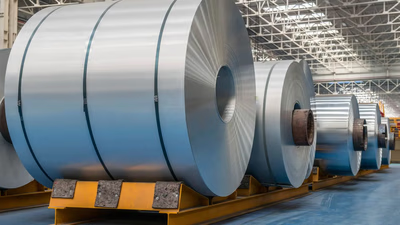
Hot rolled sheets are produced at high temperatures, typically above 1,000°F (538°C), resulting in a rough surface and lower dimensional accuracy. They are thicker and larger, suitable for structural applications where precision is not critical. In contrast, cold rolled sheets are processed at room temperature, yielding a smoother finish and higher hardness. The production of cold rolled sheets involves additional steps like polishing and lubrication, making them more expensive—often twice the price of hot rolled sheets. Cold rolled sheets offer better dimensional accuracy and tighter thickness tolerances, making them ideal for industries requiring precise specifications such as automotive and appliances. Both types have distinct applications: hot rolled sheets are used in construction and manufacturing of pipes, while cold rolled sheets find use in metal furniture and other precision-demanding sectors.
-
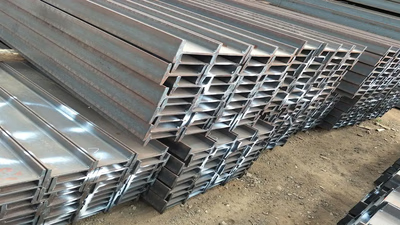
West Asia"s construction sector is booming, leading to a surge in demand for beams, essential structural components. The establishment of local beam production facilities in the Middle East is a response to this demand, driven by urbanization and economic growth. Local production reduces reliance on imports, ensuring timely supply for ongoing construction projects. Isfahan Steel Factory stands out as a top producer, known for high-quality beams that meet technical specifications. The ESCO logo indicates authenticity and quality, distinguishing Isfahan beams from lower-quality imports. As West Asian countries diversify their economies away from oil dependence, developing a robust steel industry becomes crucial for job creation and export potential. Government support through investment incentives and infrastructure development fosters the growth of beam manufacturing facilities. The region"s strategic location enhances logistics and transportation capabilities, facilitating access to various markets. Additionally, the availability of raw materials like iron ore and coal supports local steel production efforts.













